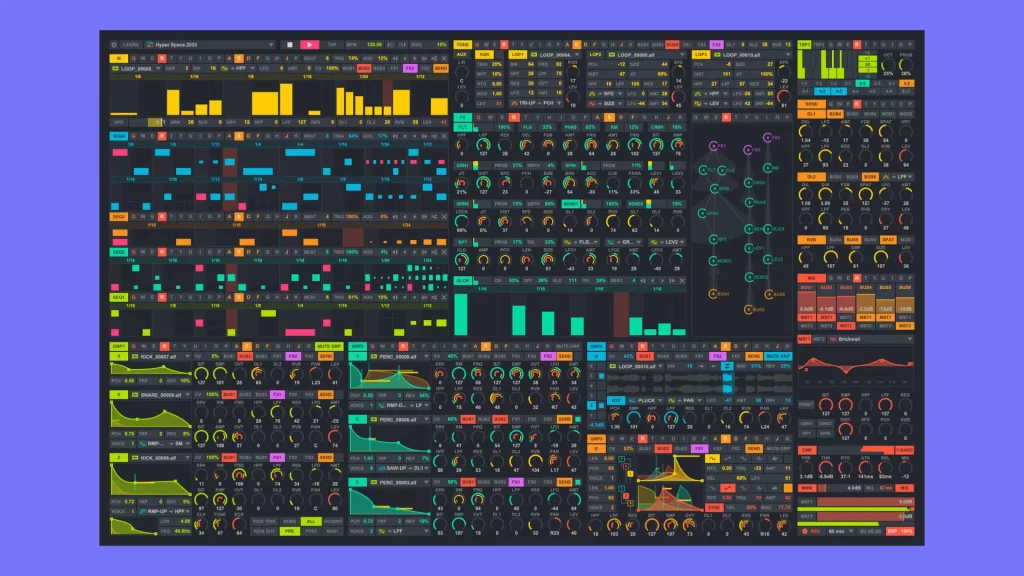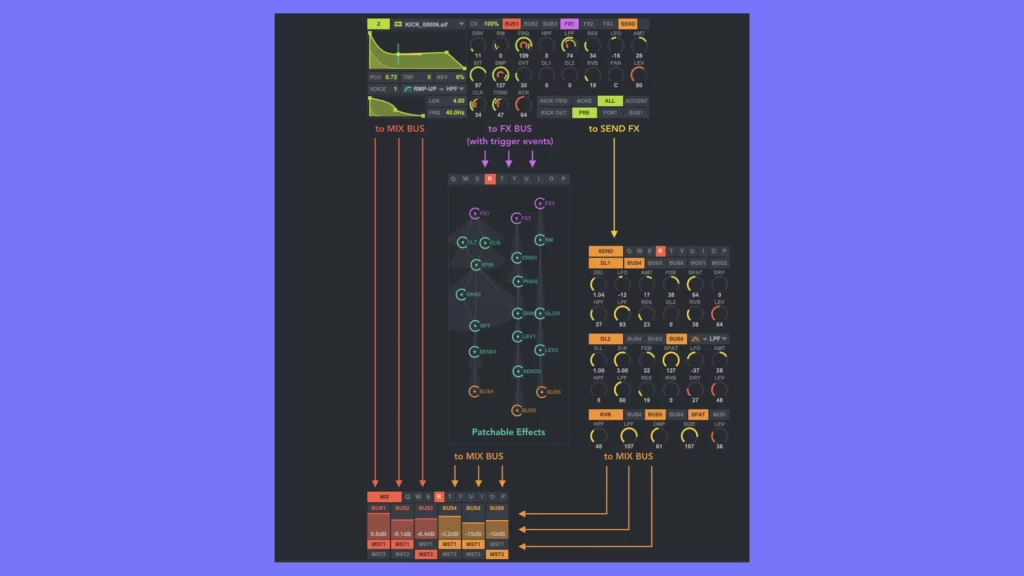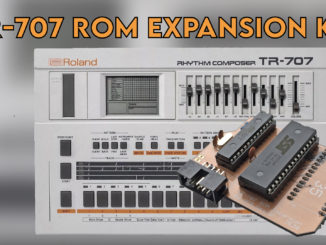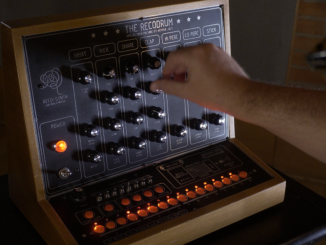2020 is an epic software semi-modular beat machine for macOS that is ready for pre-order and will be released in July 2023.
After five years in development, the wait is over. The crazy 2020 semi-modular beat machine app from DUBRussell is available now on the Apple AppStore.
The developer has released new videos that highlight many elements of the engine.
Article June 28th, 2023
The recent release of Zynaptiq Orange Vocoder showed that software product development could take longer. The developers have been working on this since 2018. Yes, there is a more extreme case. Yotaro Shuto announced his 2020 semi-modular beat machine in 2016 and simultaneously launched a Kickstarter campaign to fund development.
Here the developer raised €33,639 from 389 supporters. That was in 2016. Now, seven years later, the software is ready for release. It will come in July.
2020 The Semi ModuSemi lar Beat Machine
The 2020 software is standalone and will initially only be available for macOS. The amount of features this software beat machine offers is crazy. It’s like having everything from other drum machines packed into one piece of software and all accessible in a massive, colorful user interface. At first glance, this is a bit scary because you are overwhelmed by features.
To be able to make any sounds at all, we need generators, and we have plenty of them here.
It hosts a sample slicer module, a Higurashi generator, three loopers, 12 samplers, a kick synth, and two FM synth voices. Each instrument has an impressive set of parameters like filters, envelopes, LFOs, and more, making them very flexible.
These sounds must also be triggered. For this, it hosts four grid sequencers with variable sequence length, sequencable trigger, accent, volume, and you can work with probability. There are also two transposers, a scale-based and a step sequence-based.
Plus, you get bring even more life and unpredictability to your sequences via the built-in randomization engine. Modules that work with trigger events have a function to randomize parameters. You can set here the range and probability of randomization thus giving you unique sound variations with every trigger event.
Semi-Modular Patching
Exciting is here that the engine is semi-modular. This allows you to patch the signals freely and create custom signal paths. You can route sounds of each instrument module to six available mix buses, 3 FX buses, and send bus. And the FX bus is anything but weak.
The FX bus features 14 patchable modules, including creative effects and three freely routable LFOs: highpass/lowpass filter, flanger, phaser, ring modulator, bit crusher, two granulators, spin effect, glitch, and repeater. Plus, you get utilities like level and sender.
From here, it goes into two master buses. Each master bus contains an equalizer, filter, compressor, maximizer, performance effect, and more.
This monster engine can be controlled using MIDI CC, OSC, and your keyboard. Great, it also features Ableton Link allowing you to sync it to Ableton Live and other music apps.
First Impression
A very impressive, wild development here by the developer DubRussell. Expectations are very high when software is in development for 7 years. I’m sure the software will scare a lot of people at first because of the huge interface. Once you get used to it, it can be a monster beat machine that will be a lot of fun, I’m pretty sure.
The Semi Modular Beat Machine is available now for $119,99 from the Apple AppStore and will be released July 20th, 2023. It will run on macOS 10.13 or later (universal binary).
More information here: DUBRussell






Pre-ordering software now? No thanks, that’s horrible.
right that’s rediculius
Pre ordering something 7 years in development by a single person for $120 yeah good luck bro hahaha
well there were many supporting it via Kickstarter in 2016. The pre-order on AppStore is nothing unusual as it will come in July.
interface is mess
I find the approach far too academic! The developer expects us to have the same fun fiddling around with details. I hope he isn’t too disappointed with the acceptance of his labour of love. But I fear it could be the case.
More does not always mean more – still, my local cinema is closing down, so maybe I could borrow their screen?
the sound demo is killer! <3
but honestly: i m scared of the screen and all the functions.
i don t have weeks to actually learn this monster. unfortunately.
:S
I’ll speak as a user of this. Got it today, about 2 hours in and I got a lock on about 80% of everything there. Was surprised at how simple it was while the GUI feels soo cluttered. If you look hard enough, everything each sample section is like the same, the FM section is small and simple to use, feels like a M4L FM device. The effects are a little, huh? But once you start making connections, its crazy how deep you can make 3 FX chains and quickly, drag one FX close to another, connection made. Almost everything you do is either ALT, CMD, Shift or OPTION + drag. Thats it. Probability and randomization on almost everything and the Granular sampler (2X) in the blue area can get really weird. Again, feels much like a M4L device, like Belay or Fors Opal. I still need to dig into the Tone section and that yellow section at the top right, non-sequential instrument or something. After that, its off to the races but just dealing with groups 1-4, i have a pretty good grasp of the software and already recorded out a few sound design sessions from those 2 hours. Oh, another great thing, has a recorder right after the master so you just turn it on, play for 60 mins, grab it all and deal with a massive .wav file to extract bits from. I do agree, the screen is overwhelming but no more than bitwig polygrid after you go patch crazy, or vcv rack…after you go patch crazy. Only thing here is that it starts that way but the best part is that there is no menus, no other screens, nothing. Whats in front of you is what you get so dont get overwhenmed by the amount of knobs, most are the same set, just for each device. I know its the internet and everyone smashes everything and thing is just easy prey but now that ive switched to bitwig, im limited in my quick sound design mangling since Ableton and M4L gave me a bunch of great devices to do heavy lifting easily. Sure, bitwig is a modular DAW but you know what i mean, dedicated sound design interface, not Infiltrator, running into Snap Heap, then into a delay with a modulator on it, and a host of random modulators. Its all here, patched and ready to go. Not sorry for it being long, its like 6-7 pointless comments smashing the software having never used it, wrapped into one in-depth comment from a user POV:)
Can you use the sequencer as looks great to sequence external drum machines?
Meanwhile on VCV RACK…
Is there a way to save the project as a midi file?
No. Midi OUT workaround?